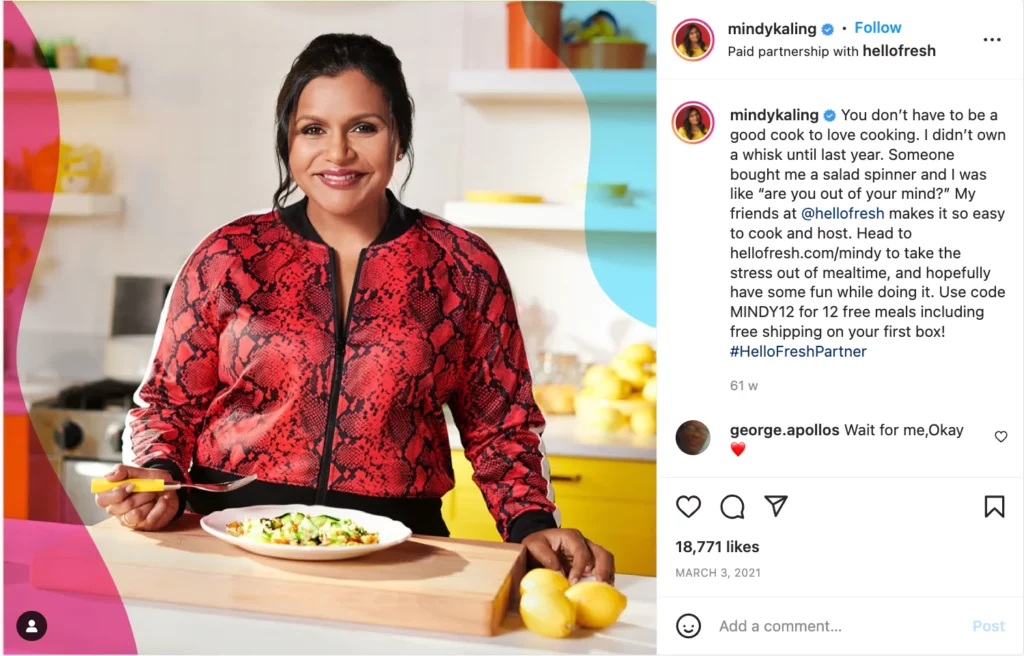Are you ready to elevate your influencer marketing game to new heights? Well, buckle up, because we’re about to take off on an exciting journey into the world of influencer whitelisting!
Today’s blog post, “8 Things You Should Know About Influencer Whitelisting,” is your ultimate guide to understanding and leveraging this powerful strategy that’s taking the digital marketing world by storm. With the right approach, you’ll be amplifying your brand’s presence and reaching new audiences like never before.
But wait, what is influencer whitelisting, you ask? 🤔 No worries, we’ve got you covered! This post will break down everything you need to know, from the basics of whitelisting to the nitty-gritty of how it works, plus some pro tips to help you skyrocket your success.
So, get ready to learn, grow, and become an influencer whitelisting whiz with us! Let’s jump right into this exhilarating adventure together!
What is whitelisting?
Whitelisting is the process of granting an influencer or publisher special access to your brand’s social media accounts or ad accounts. This allows them to create and publish content or run ads on your behalf, all while using their own unique voice and creativity.
The beauty of this strategy is that it enables you to tap into the influencer’s engaged audience, boosting your brand’s visibility and increasing the likelihood of attracting new customers. With influencer whitelisting, you can amplify your message, reach a wider audience, and make the most of the influencer’s credibility and trustworthiness. It’s a win-win situation for both brands and influencers!
What are the advantages of whitelisting with influencers over regular ads?
Now that we’ve established what influencer whitelisting is, let’s discuss why it’s such a game-changer compared to traditional advertising methods. For starters, when you whitelist with influencers, you’re leveraging their established credibility and trust among their followers. This means that the content they create for your brand will likely resonate more with their audience, resulting in higher engagement rates and better overall performance. Additionally, influencer-generated content often feels more authentic and less “salesy” than traditional ads, which can help your brand appear more relatable and genuine.
Another key advantage is the cost-effectiveness of influencer whitelisting. Running ads through an influencer’s account can lead to lower costs per click or impression compared to managing the ads yourself. Plus, the influencer’s expertise in content creation can save you time and resources, as they will be the ones crafting the perfect message that aligns with your brand values and resonates with their followers. Ultimately, influencer whitelisting provides you with the perfect blend of authenticity, trustworthiness, and cost-effectiveness, making it an invaluable marketing tool in today’s digital landscape.
What is an example of whitelisting?
To better understand the concept of influencer whitelisting, let’s take a look at a real-life example featuring the talented Mindy Kaling and the popular meal kit delivery service, HelloFresh. Mindy Kaling partnered with HelloFresh for a sponsored Instagram post, where she shares her experience cooking a delicious meal using one of their kits.

The post garners a significant amount of engagement, showcasing the positive impact of the collaboration on both Mindy’s followers and HelloFresh’s target audience.
Let’s imagine that to capitalize on the success of the partnership, HelloFresh decides to whitelist Mindy’s Instagram account, allowing them to use her original post as an advertisement for their brand. By granting HelloFresh access to her ad account, Mindy enables them to promote her post to a wider audience, targeting users beyond her current followers. This way, HelloFresh can tap into the trust and credibility that Mindy has built with her audience, resulting in a more authentic, relatable, and effective ad campaign than traditional advertising methods might achieve.
How do you choose the right influencers to whitelist with?
Choosing the right influencers to partner with for whitelisting is a critical step in ensuring the success of your campaign. To find the best match, consider the following factors:
- Relevance: Ensure the influencer’s niche aligns with your brand, product, or service. Their audience should be genuinely interested in the content they create for you, which increases the likelihood of engagement and conversions.
- Audience demographics: Analyze the influencer’s audience demographics to see if they match your target customer profile. Pay close attention to factors such as age, gender, location, and interests to ensure that your message reaches the right people.
- Authenticity: Look for influencers who have a genuine connection with their followers, and who consistently produce high-quality, engaging content. A strong rapport between the influencer and their audience can lead to better results when promoting your brand.
- Size and engagement: While it might be tempting to focus on influencers with a massive following, sometimes partnering with micro-influencers (those with 1,000 to 100,000 followers) can yield better results. Micro-influencers often have a higher engagement rate, and their followers may perceive them as more trustworthy and relatable.
- Track record: Review the influencer’s previous brand partnerships and collaborations to determine if they have a history of successful campaigns. This will help you gauge their ability to effectively promote your brand and achieve your marketing objectives.
What type of content do you use for whitelisted ads?
Selecting the perfect content for your whitelisted influencer ads is all about finding the sweet spot between the influencer’s authentic voice and your brand’s message.
One effective approach is to use user-generated content (UGC), which refers to content that the influencer has already created for your brand. UGC often feels more organic and genuine, which can help build trust and foster a connection between your brand and the influencer’s followers.
Alternatively, you can collaborate with the influencer to develop content that showcases your product or service in a way that resonates with their audience while still highlighting your brand’s unique selling points. Ideally, the content should be visually appealing, engaging, and shareable to maximize reach and impact.
By focusing on authenticity and aligning with the influencer’s style, you can create powerful whitelisted ads that effectively connect with your target audience and drive results.
Do influencers charge for whitelisting?
When it comes to influencer whitelisting, it’s important to understand that payment structures can vary depending on the influencer and the specifics of your collaboration. Some influencers may charge a flat fee for granting access to their account, while others may prefer a commission-based structure, earning a percentage of the ad spend or revenue generated from the campaign. In some cases, influencers may offer a combination of these payment methods, or they might include whitelisting as part of a broader partnership package that encompasses content creation, social media promotion, and more.
It’s crucial to communicate openly with the influencer and establish clear expectations and terms regarding payment before entering into a whitelisting agreement. By doing so, you can ensure that both parties are satisfied with the arrangement, and you can minimize the risk of misunderstandings or conflicts down the line. Remember, a successful influencer partnership is built on trust, transparency, and mutual benefit, so don’t hesitate to discuss financial matters openly and professionally.
How do you start whitelisting?
First thing’s first, partner with an influencer whose audience you’d like to leverage for ads. Next, have the influencer go to their Facebook Business manager and give them your Facebook Business Partner ID. They should click:
Settings ➡️ pages ➡️ add page ➡️ copy and paste Facebook URL ➡️ Add ➡️ Assign Partner ➡️ Enter your Business Partner ID ➡️ Toggle Create Ads ➡️ Next ➡️ Complete.
You now have access to advertise on their Facebook page. Now, follow the same steps but for their Instagram page. Once you assign the influencer’s Instagram and Facebook to an ad account–You’re all set. You can now run ads from their Instagram and Facebook pages. Be sure to create audiences based on engagement with the influencer’s pages. You can also use lookalike audiences just the same as any other Facebook campaign.
Another hot tip: When creating ad content, look through their old organic posts to see how they caption posts, and what kind of content they post. Don’t assume that what works with your own ads will be replicated on the influencer’s pages.
This game-plan comes from our free influencer marketing guide, where you can also find game-plans for generating more user-generated content and product seeding.
Whitelisting can be the key to revenue-driving influencer collaborations
In conclusion, influencer whitelisting is a powerful marketing tool that offers numerous benefits for brands looking to amplify their message and reach new audiences. By partnering with the right influencers and promoting authentic, engaging content, you can create impactful ad campaigns that resonate with your target audience and drive results.
As you navigate the world of influencer marketing, remember to prioritize open communication, transparency, and trust with your partners. By doing so, you’ll cultivate successful, long-lasting relationships that benefit both your brand and the influencers you work with. With the knowledge and insights provided in this blog post, you’re now well-equipped to explore the exciting opportunities that influencer whitelisting has to offer and take your digital marketing strategy to new heights!




